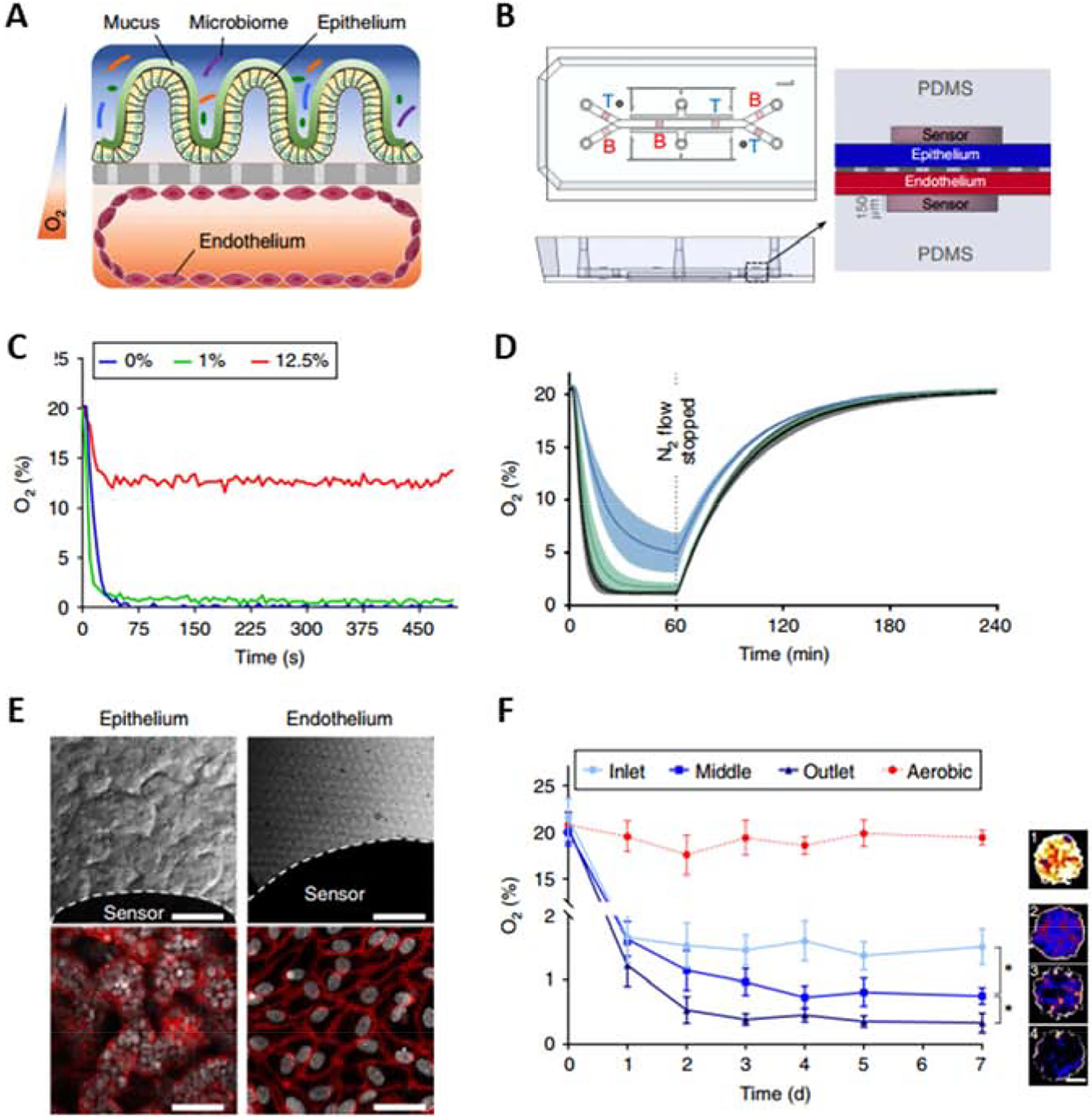Figure 8.

Oxygen-sensitive human Intestine Chip. A) A schematic of the two-channel Chip device with an oxygen gradient. The human intestinal epithelium, which is overlaid with its own mucus layer and complex gut biota, is located over an extracellular matrix-coated porous and flexible membrane. The vascular endothelium lies under the porous membrane. B) A schematic representation of the Intestine Chip with six oxygen-quenched fluorescent particles embedded in the inlets, middles, and outlets of the top and bottom channels. C) A sensitivity analysis of oxygen spots located in the Intestine Chip in response to defined, standard oxygen concentrations. D) Anaerobic chamber validation at various N2 inflow pressures. E) Microscopy images showing the villus morphology of human Caco2 intestinal epithelium (top left; scale bar, 100 μm) and vascular endothelium (top right; scale bar, 100 μm) cultured for 6 days in the microfluidic chip under anaerobic conditions, white dashed lines indicate the border of the oxygen sensor spot. F) Oxygen concentration profiles in aerobically and anaerobically cultured Intestine Chips. Representative pseudocolor insets indicate the average oxygen concentration in the aerobic chip (1) and the inlet (2), middle (3) and outlet (4) of the anaerobically cultured epithelium channel, at day 7 of culture. Scale bar, 200 μm. Reproduced from Jalili-Firoozinezhad et al. [93], with permission from Springer Nature Publishing.
